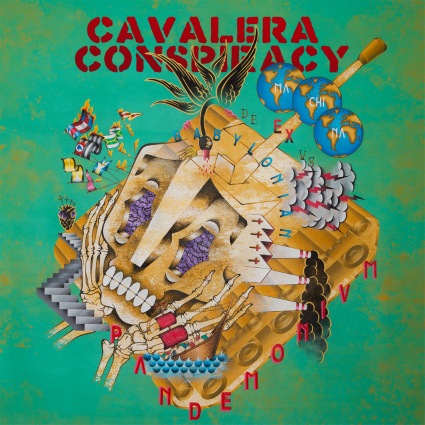BTO, Guess Who hitmaker talks more about his life in music
By Peter Lindblad
 |
Randy Bachman - Every Song
Tells a Story 2014 |
Randy Bachman has taken care of some unfinished business with "Every Song Tells A Story."
Fans of his who'd seen the legendary songwriter and guitarist on tour talking at length about his career and the creation of some of his most iconic songs while performing live – similar to the "Storyteller" series of VH1's past – were clamoring for such a release.
Out as a CD/DVD package, via the
Independent Label Services Group, "Every Song Tells a Story" documents a wonderfully intimate and often humorous night of Bachman holding court and playing songs like "American Woman," "No Sugar Tonight," "These Eyes," "Let It Ride" and "You Ain't Seen Nothin' Yet," among others, at the Pantages Playhouse Theatre in his hometown of Winnipeg.
In Part 2 of our interview with Bachman, he talks more in-depth about his time with Bachman-Turner Overdrive, while also talking about 1969, a big year for The Guess Who.
1969 was such a monumental year for The Guess Who, with the success of “These Eyes” and the albums Wheatfield Soul and Canned Wheat and “Laughing” and “Undun.” Why was that year such a creative high for you, and when did it seem like this year was going to be huge for the band? And what are your favorite memories of recording those records?
RB: Well, as songwriters, and I was writing full-tilt with Burton Cummings and later, writing on my own and then writing with [Fred] Turner and BTO, you write a song every day or at the end of the week, you’ve written maybe 10 songs or 10 fragments, and if you’re lucky, if you have a 10 percenter, where one out of 10 songs is good – so if you’re doing an album, you’ve got to write a hundred songs to get 10 or 12 good ones and you do do that, and you go back later and take some of those ideas and you develop them again, because they’re ideas about a girl or a car or wanting to fly or wanting to drive your car … things like that. But when you get into this groove where the record label is suddenly promoting you and not the other band that you hate, which might be the New York Dolls or Rush or somebody else on your label at the time (laughs), and with RCA with The Guess Who, it was the Jefferson Airplane … “they’re promoting them, why aren’t they promoting us?” – that kind of thing. And suddenly, it’s your turn, and they’re promoting your stuff, and that means all their PR guys, their record guys, who went into the radio stations were saying, “Here’s our priority. It’s the Guess Who.” Or, “Here’s our priority. It’s Bachman-Turner Overdrive. This is our priority single.” Which means they’re pushing that, and then radio gets it, and then radio suddenly tunes in and goes, “Yeah, this is really good. The phones are lighting up when we’re playing BTO or the Guess Who. So let’s play more of them in drive time because everyone’s listening in the morning driving to work and it makes us feel good.”
And then suddenly the record sales start, and they all start to call you for more music. And you’re writing music all the time. You could say, “You want more? You want more? We’ve got more.” You give them more songs, and they put out more songs, and radio plays more songs, and you get into this groove that’s wonderful, and if it could last one or two or three years, that’s great. And then you burn out, and they go on to their next band, and that’s the music business. That’s like falling in love – two or three years of a lot of happening stuff, and then a couple of years of indifference, and then you either fall in love again or you take or break or the seven-year itch comes and you change partners, you know what I mean? It’s a cycle of life, and it breaks hearts, and bands break up, people break up, you love each other, you like each other, and then the same things that made you fall in love make you fall out of love or whatever. The friction that creates the music is the friction that explodes you up. It’s the same with Jagger and Richards and Aerosmith and every other band. The frictions are great. You make great music, and then you end up hating each other, and that’s the way the world rolls.
One of those lucky accidents you talked about was Charlie Fach essentially saving what would become BTO. How confident were you that this band was going to make it?
RB: Well, out of the blue, when I had Brave Belt, I had two albums with Brave Belt and Brave Belt III was dropped by Reprise Records. Neil Young got me a deal with Jon Ossman (Young's bassist) of Reprise. And they said they couldn’t put out Brave Belt III. I sent that out to 26 labels that passed on it all. Charlies Fach came and called me and said, “I gotta give you a chance. Change your name. We don’t want Brave Belt on there. Put the name Bachman in there.” And I said, “Well, it’s me and a couple of brothers and Fred Turner.” And he said, “Fine, call yourself Bachman Turner. It’s better than Brave Belt. Nobody knows what Brave Belt is. I want your name in there because you wrote all the hits for The Guess Who.” So we’re called Bachman Turner for a couple of months, and we show up and people think it’s Brewer & Shipley or Seals and Crofts – two guys on a mandolin singing, “Diamond Girl.” And we’re there blowing plates off the table. We’re booked in coffeehouses. We’re blowing the coffee off the table. And so we needed a better name and we find a truckers’ magazine called “Overdrive.”
And we called Charlie Fach and say, “How about Bachman-Turner Overdrive?” He says, “Wow! Great name for an album, but it’s too long for a band.” I said, “Well, how about BTO?” Because Chicago then was CTA, Chicago Transit Authority. We’re calling Crosby, Stills and Nash, CS&N. I said, “So we’ll have the initials. We’ll have the long name, Bachman-Turner Overdrive, and we’ll have a short name, BTO,” and he said, “Perfect.” We put out our first album. It said, “BTO” in the middle and Bachman-Turner Overdrive around this big overdrive gear, and bang! We’ve got a worldwide recognized trademark and symbol. It all happened by organic accident, it just evolved. And there we were, BTO. So I trusted Charlie Fach and his instinct. He liked the name. He gave me a break. He was the only guy out of 26 labels who gave me a break, and we’re supposed to put out one album every 18 months, and the first 18 months, we had three albums on the charts, a No. 1 single and a No. 1 album. And he was totally right. That was a big moment. He was right. He urged me to put “You Ain’t Seen Nothing Yet” on the album. It was a throwaway track. He made me put it on the album. He said, “I discovered ‘Maggie May’ for Rod Stewart, and ‘Hey Baby’ for Bruce Channel, and I discovered ‘Tennessee Waltz” for Patti Page.’ He went that far back. And he said, “I’m discovering this for you. This is going to be a career song for you. Put it on the album.” That was the first BTO album that had the ninth song. They all had eight songs – four a side. We took the five short songs and put them on one side, had the ninth song on, it became No. 1 in 22 countries. It was a million-selling single. He knew what he was talking about.
Not Fragile turns 40 this year. Was there a point in the recording where you felt you had something special on your hands?
RB: Well, we knew we were on a roll because previous albums were on the charts and “Let it Ride” and “Takin’ Care of Business” had done very well on the chart. We had no idea the reject song, “Ain’t Seen Nothing Yet,” would go to No. 1, but Charlies Fach felt we had really good momentum with radio and the fans, and that this album was going to do well. Fred Turner wrote the title song, “Not Fragile,” in kind of a pun response to the Yes album called Fragile, with the world breaking apart. Ours was a box full of gears saying, “We’re not fragile.” He wrote this heavy-riff song and in there are another couple of great songs, “Sledgehammer” and “Rollin’ Down the Highway,” and out of it comes this magical reject of a song “You Ain’t Seen Nothing Yet” that becomes a million-selling hit single, and boom! It becomes a quintuple platinum album at the time. It sold five or six million copies.
In 1974, Tim Bachman left the band, and you had a daunting tour schedule. Somehow you were able to record Not Fragile. How were you able to work through all that to get Not Fragile done?
RB: I have no idea – sheer guts and determination, and Plan B is to stick to Plan A. We’re doing an album … and I didn’t care if we did the album with the three of us. We were quite competent. We were a trio many times, because guys kept leaving Brave Belt and BTO, until we got my brother Tim. When he left, it was no big deal. We went back to … we were ready to cut the album, but Bruce Allen, who was our manager, said, “Why don’t you try Blair Thornton? He’s a good guitar player. You’ll be like the Allman Brothers. You’ll have two lead guitars. You can trade off.” So we gave Blair a shot and it worked. He was great for many albums, and he would play different solo structures with me, so you could tell his solos and it gave our songs a bit of variety. I do it the first solo, you do it the second and we play harmony together and it kind of was a chance for us to stretch out and spread out a little bit.
Watching the DVD, you seem like a born storyteller. Has it always been that for you?
RB: No. I found it very odd to hear my voice speaking, but I got my own radio show by accident and now it’s in its ninth year. It’s called “Randy’s Vinyl Tap,” and it’s on CBC Radio and Sirius satellite and I have about 12 million listeners every week, so I’ve gotten used to telling stories. And it’s really easy telling the stories behind my own songs. I’ve told them for years to every DJ I met at every radio station, who’d say, “How did you write ‘American Woman’? How did you write ‘Undun’? How did you write this?’ I told the stories one at a time, so to be able to put them together and to be able to do it in my hometown where I’m basically looking at the front row and it’s all my cousins and guys I went to school with, and I’m telling these stories ... to me, I didn’t see the cameras. That’s the trick when you’re an actor. You look right at the camera and the trick is to not see it. So I didn’t see the cameras there. All I could see were my friends and relatives. I could see and feel love from the audience and maybe that showed in my face, because I haven’t seen the DVD. I have no idea.


















